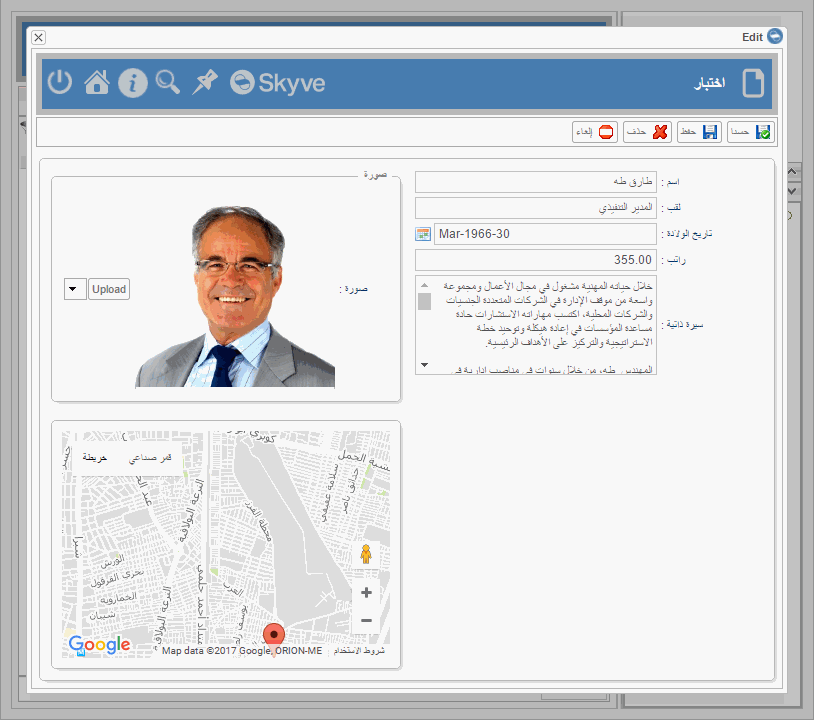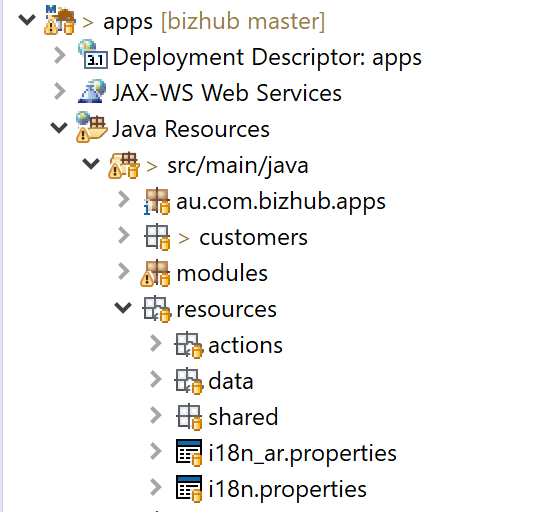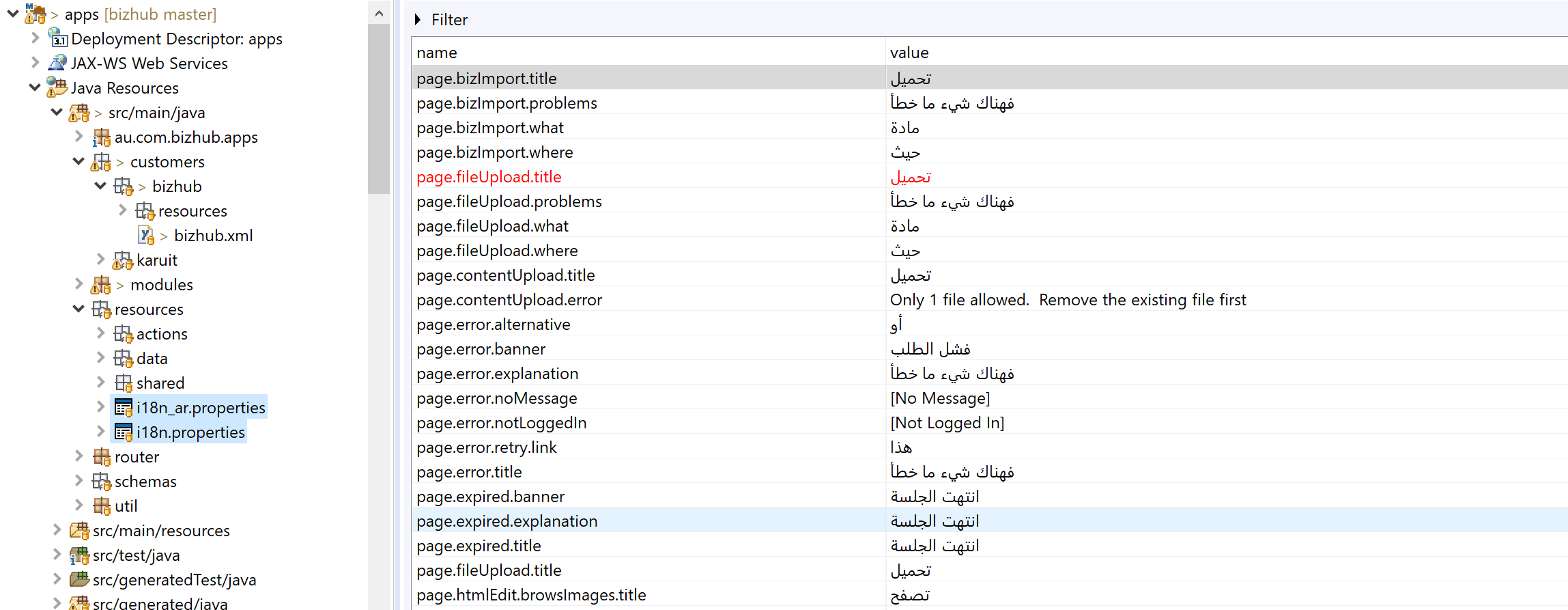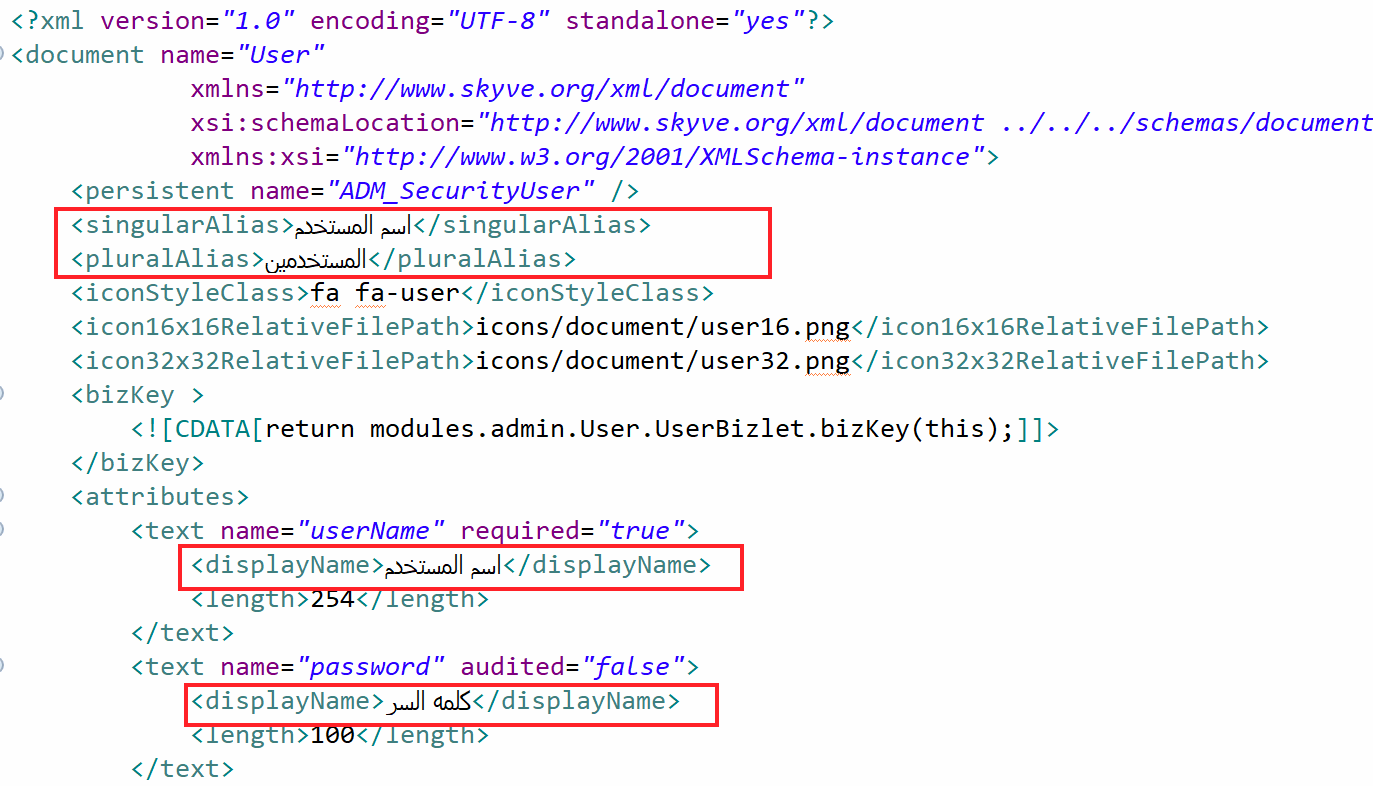Internationalisation
Internationalisation and language support
Skyve supports building apps for local languages, including both left-to-right and right-to-left lanagues, as well as building applications for multiple languages (internationalisation).
Skyve metadata declarations can include UTF-8 characters and applications can store UTF-8 data (provided the database chosen by the developer is configured correctly).

Skyve provides a basic internationalisation resource file as a starting point for non-English usage. The file is named according to the ISO 639-1 two-letter language code and placed into the project/resources folder.
e.g. i18n_ar.properties

The resource file contains key value pairs for the basic fixed Skyve messages, however you can add your own tokens (tokens you declare in your application metadata).
Skyve also provides the getLocale() convenience method.
Locale locale = CORE.getUser().getLocale();
For example, the System Dashboard uses this feature for the status settings
@Override
public SystemDashboard newInstance(SystemDashboard bean) throws Exception {
// generate status information for display
Locale locale = CORE.getUser().getLocale();
String valTrue = Util.i18n("ui.true.valueIconStyleClass", locale);
String valFalse = Util.i18n("ui.false.valueIconStyleClass", locale);
String valDisabled = Util.i18n("ui.disabled.value", locale);
String valNo = Util.i18n("ui.no.value", locale);
String valUnavailable = Util.i18n("ui.unavailable.value", locale);
...
Setting a default language for a customer
It is often the case that a business operates in one (default) language irrespective of the locales of their users and so Skyve allows you to declare the language for a customer.
To set the default language for a customer, include the language setting as follows (in this example, “ar”=Arabic).
<?xml version="1.0" encoding="UTF-8" standalone="yes"?>
<customer name="projecta"
xmlns="http://www.skyve.org/xml/customer"
xsi:schemaLocation="http://www.skyve.org/xml/customer ../../schemas/customer.xsd"
xmlns:xsi="http://www.w3.org/2001/XMLSchema-instance"
language="ar">
</customer>
If the language is not specified in the customer.xml, Skyve will detect the locale from the browser, provided there is a matching internationalisation resource file provided.

UTF-8 Data
To ensure the database can store UTF-8 characters, ensure you have set the correct character set and collation.
For example, whereas H2 supports UTF-8 with default settings, for MySQL, ensure that the database is created with the correct character set and collation:
CREATE DATABASE myDatabase CHARACTER SET utf8 COLLATE utf8_general_ci;
Additionally for MySQL, ensure your datasource connection string includes Unicode and UTF-8 encoding, for example:
jdbc:mysql://myServer:3306/myDatabase?useUnicode=true&characterEncoding=UTF-8&useCursorFetch=true&defaultFetchSize=100
More detail are available in the Appendix
Local language support
You can use UTF-8 characters for display attributes in Skyve metadata.

Using this approach you can mix languages on the same view.

Building apps for multiple languages
To create a true international application, you can use the traditional token-replacement approach - add tokens for the metadata declaration and matching key-value pairs in internationalisation resource files.
We suggest using the naming convention module.document.attribute(.property) for your tokens, as shown.

Next Bizlets
Previous Converter, validator and format